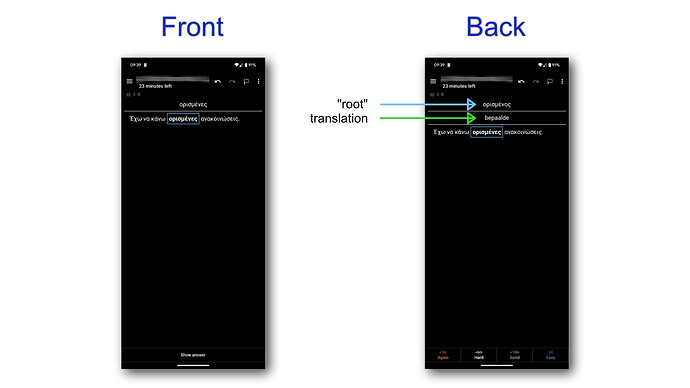For many languages, case declension causes a single noun to have multiple forms. Thankfully, when saving a word, there is an edit button that allows you to alter the word or its form. However, this removes the sentence context from your flashcards. It would be helpful if the sentence where the word came from remained visible after changing the word’s form. Also, adding an option to automatically change the word to its nominative form would make revising such words less awkward.
Sorry but Readlang isn’t intended to work this way. It’s intended for you to practice each different form/conjugation of a word separately along with its context. You could “misuse” the synonym field to insert the root version of the word there if you’d find that useful.
Eventually it might be nice to group/link the different forms of the same root word together somehow, but Readlang doesn’t do that at the moment.
I agree with George that adding the nominative case would be extremely useful. The declensions can often be inferred, but only if you know the nominative case (e.g. in Greek all genetive plural cases use the article των, so you need the nominative case if you would like to use it correctly in a sentence).
Can’t the context be shown in a carousel kinda way? If you have multiple contexts you could scroll through the carousel and see the different cases. Not showing the context because the word cannot be found sounds like an arbitrary choice to me to be honest.
I get that it would be nice if Readlang was more aware of the grammar here. But Readlang supports a lot of languages and different languages have different grammar rules so this would be opening a huge can of worms.
The way Readlang works, and will continue to work in the short term, is that your progress in learning each word is tracked separately for each specific form of each word. This approach has pros and cons, and may work better for some languages than others. If you keep using the system long enough you will eventually cover all the common forms of each word. Yes, this means that the English words “car” and “cars” will be treated as different, which may seem silly, but the alternative gets very complicated. e.g. you could store the user’s progress in learning “car” and the rule that plurals in English are typically formed by adding an “s” on the end. But there are exceptions, some words are made plural by changing the ending to “i”, e.g. “stimulus” vs “stimuli”. Keeping track of all these rules across all parts of speech and all languages would be very complicated, so I think practicing specific forms of each word and tracking your progress on these specific forms is the best, simplest and most foolproof solution for Readlang to enable you to learn all these different forms.
I do think adding a concept of a “root” word could be useful. And adding an extra field to each card with this info (probably using AI) could be nice. When talking about verbs, this would be the infinitive form, but it could also generalize to nouns like you’re talking about. (Even though this sounds sensible I bet there will be many cases where which root word to display isn’t obvious when you consider how many languages Readlang supports.)
Going further, maybe there could be a kind of “beginner” mode where you are only required to learn the root forms of words and all the related “derived” forms (e.g. conjugations of verbs or declensions of nouns) are grouped together as you suggest. Don’t hold your breath for this though since it would be a very big change from the way Readlang works right now!
I’ve worked my way around it in Anki. In the attached screenshot you can see that the back of the flashcard contains both the root and the translation. So it gives me the opportunity to practice two things at the same time. Just wanted to share it with you guys. It leverages the synonyms mechanism in Readlang, combined with very little post processing to add the styling to the exported context.
I’m doing the same directly in ReadLang:
